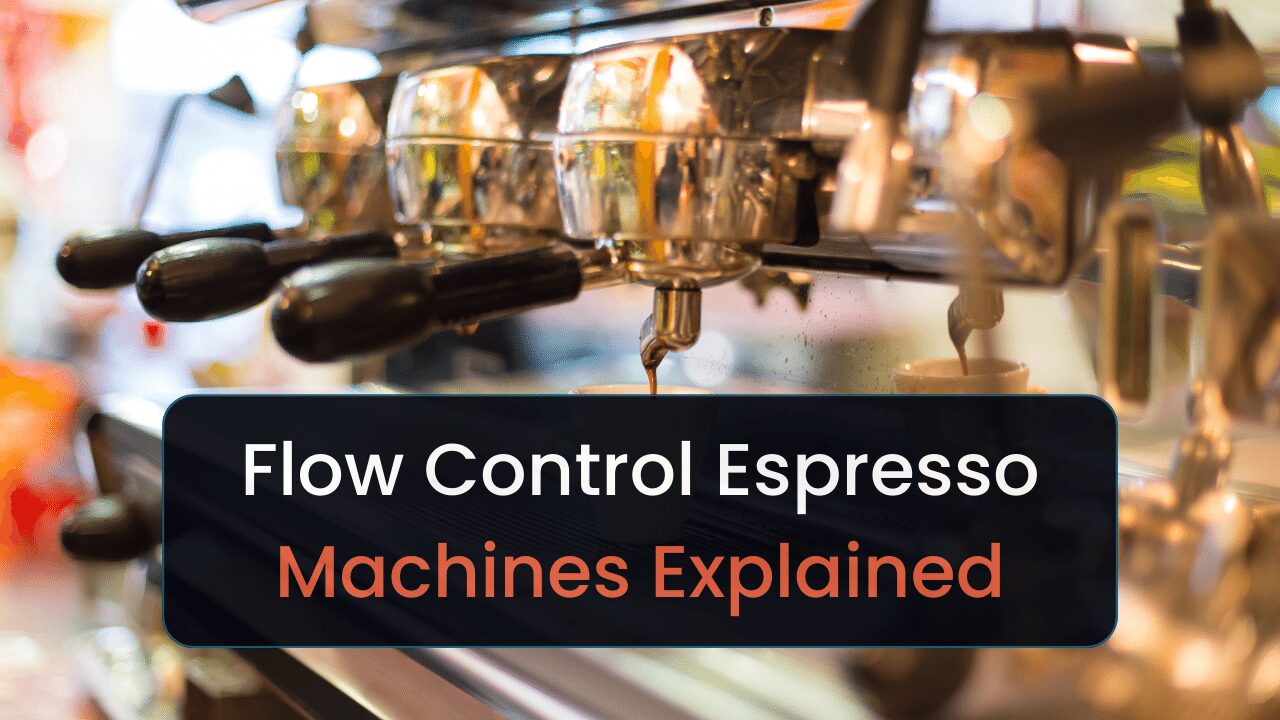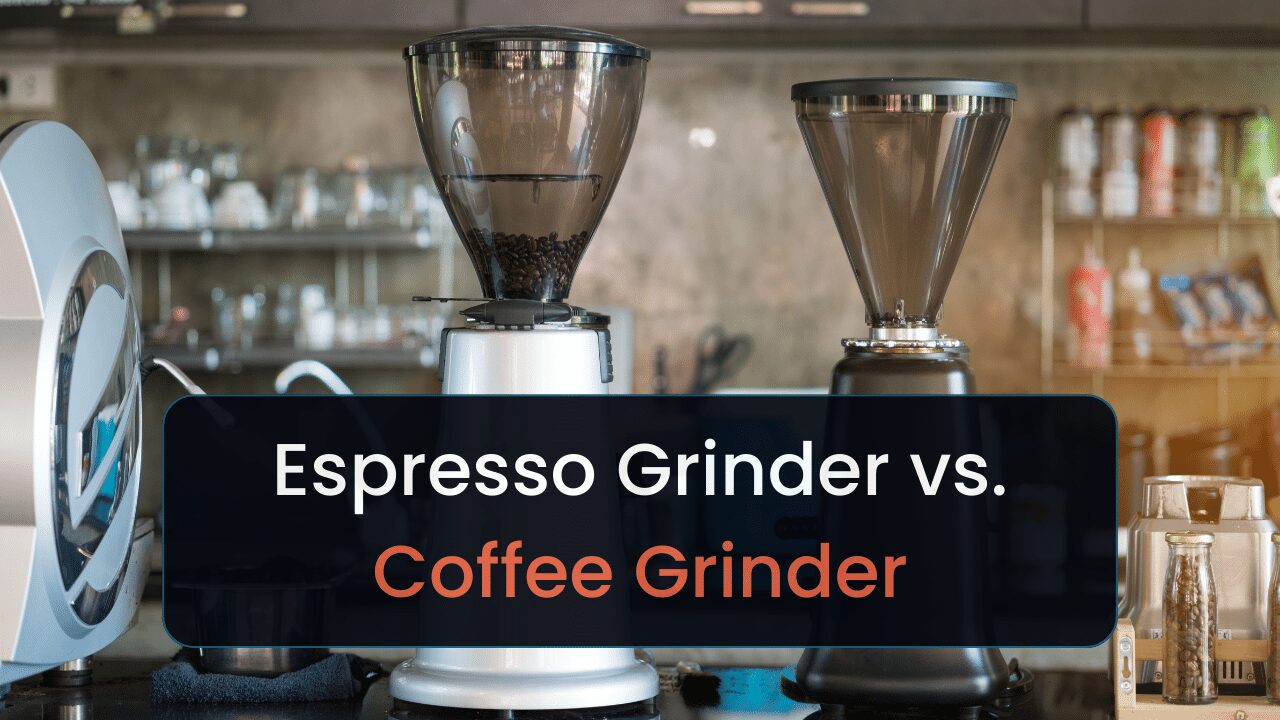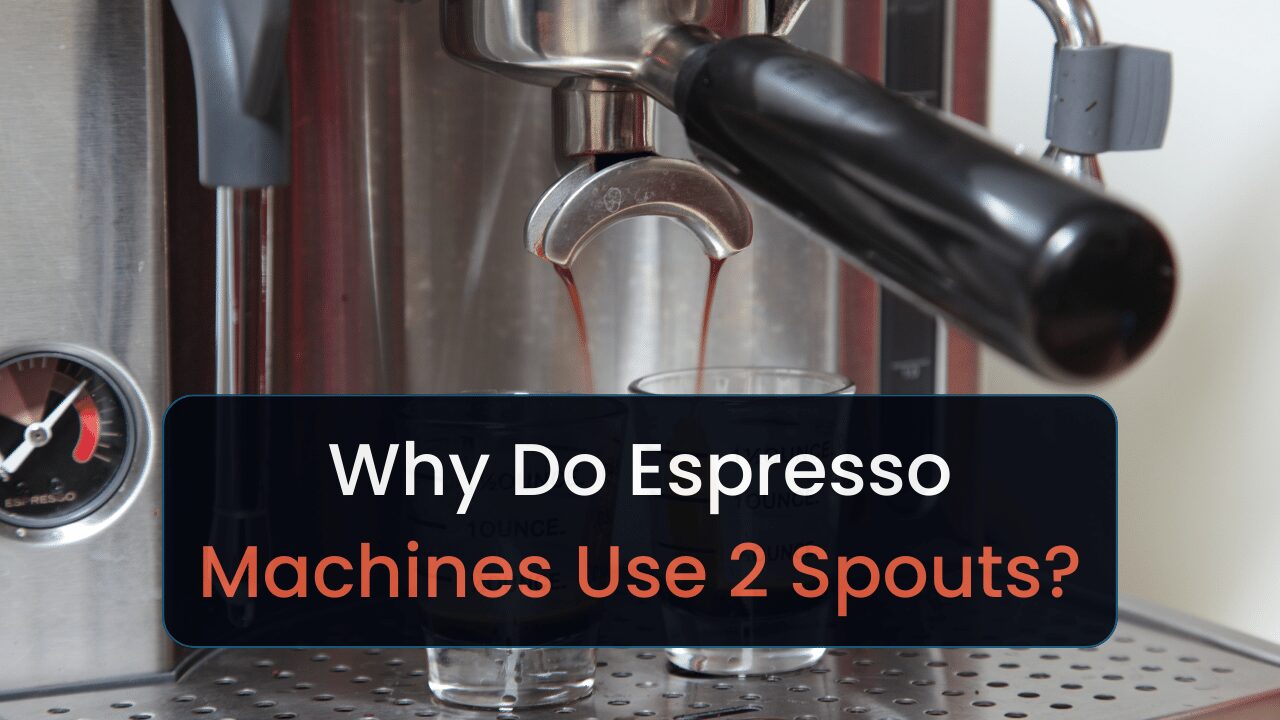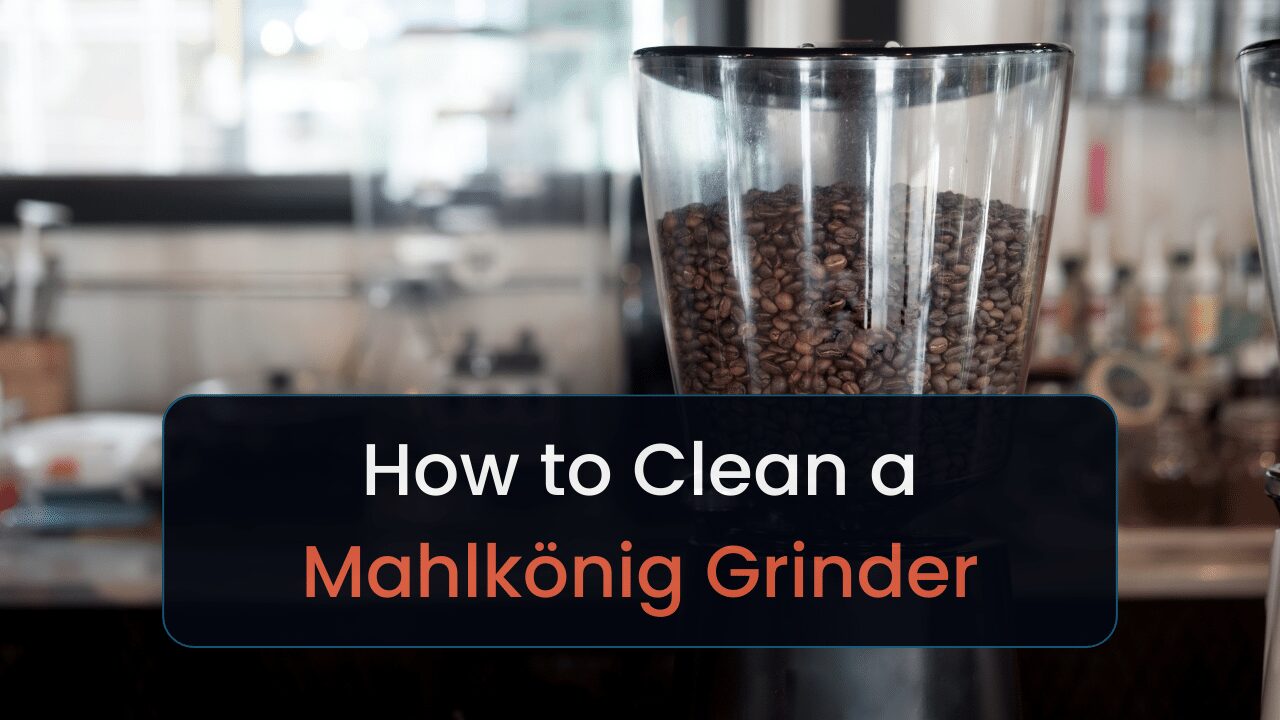Hi, I’m Tim. I’m a coffee enthusiast that has been making pour-over coffee for over ten years.
I’ve experimented with different grind sizes, beans, and brewers and know what grind sizes work best. So, I made this guide to help you get the best grind for your pour-over brew.
Let’s dive in.
Key Takeaways
- The best grind size for most pour-over brewing equipment is medium-fine.
- Depending on your pour-over brewer, you may need coarser or finer grind sizes.
- You can experiment with different grind sizes based on your flavor and strength preferences.
What is the Best Grind Size for Pour-over Coffee?
The best grind size for pour-over coffee is a medium-fine grind. However, depending on your specific pour-over coffee brewing equipment, you may need finer or coarser grinds.
Medium-fine grind allows the water to pass through the grounds quickly, which will help you extract the maximum amount of flavor from your beans.
A medium-fine grind also ensures that all of the grounds are exposed to hot water evenly, resulting in a balanced cup of coffee with no sediment or bitterness in your cup.
If your grinds are too coarse and the water will pass through too quickly, resulting in a weak-tasting cup of coffee.
On the other hand, if the grind size is too fine, the water can be blocked from passing through efficiently, resulting in an overly concentrated or bitter cup of coffee.
Grind Size Factors for Pour-over Coffee
Here are the factors to consider when you grind whole beans for pour-over coffee.
Brew Time and Water Flow
The grind size affects the rate at which water flows through the coffee grounds during the brewing process.
Finer grinds tend to slow down the water flow, allowing for better extraction.
Coarser grinds may result in a faster flow, potentially leading to under-extracted coffee.
Consider the flow rate of your pour-over device (and how quickly you pour water on it) and choose a grind size that allows for optimal water flow.
Flavor Profile
The grind size also impacts the flavor profile of your coffee.
Finer grinds extract more flavors, resulting in a stronger and more intense cup of coffee. Coarser grinds, on the other hand, tend to produce a lighter and more delicate flavor.
Consider your personal preference and the desired flavor profile when choosing the grind size.
Brewing Method
Different pour-over brewing methods require different grind sizes.
For example, a V60 or Chemex typically requires a medium-fine grind, while Turkish coffee needs an extra-fine grind.
Ensure that you choose a grind size that is recommended for your specific brewing method to achieve the best results.
Consistency
Consistency in grind size is crucial for a uniform extraction.
Uneven grind sizes can lead to uneven extraction, resulting in a cup of coffee with varying flavors.
Look for a filter grinder that can produce a consistent grind size to ensure a more balanced and flavorful brew.
Bean Freshness
The freshness of your coffee beans also plays a role in choosing the best grind size.
Freshly roasted beans tend to release more CO2, causing them to bloom and expand during the brewing process.
In this case, you might need finer grinds to accommodate the blooming process and ensure proper extraction.
With older beans, you might need a coarser grind to compensate for the potential loss of flavor.
Experimentation
Ultimately, the best grind size for pour-over coffee is a matter of personal preference.
It may take some experimentation to find the perfect grind size that suits your taste.
Start with the recommended grind size for your brewing method and adjust accordingly until you find the ideal balance of flavor, strength, and extraction.
Recommended Grind Sizes for Different Pour-over Methods
Here are my recommended grind sizes for various pour-over coffee brewing methods (and some that aren’t technically “pour-over” brewing).
Medium-Coarse Grind – Chemex
The Chemex pour-over method requires a medium-coarse grind.
Medium-coarse allows for a balanced extraction, resulting in a clean and crisp cup of coffee. The thicker filter used in the Chemex helps to remove any bitterness or sediment.
Medium Grind – Hario V60
The Hario V60 pour-over method calls for a medium grind.
This grind size allows for a quicker extraction, producing a bright and flavorful cup of coffee. The ridges in the V60 filter help to enhance the extraction process.
Medium-Fine Grind – Kalita Wave
For the Kalita Wave pour-over method, I recommend a medium-fine grind size.
This allows for a slower extraction, resulting in a well-balanced and smooth cup of coffee. The flat-bottomed design of the Kalita Wave filter promotes an even extraction.
Fine Grind – Aeropress
The Aeropress pour-over method requires a fine grind.
The finer grind size leads to a shorter brew time which produces a concentrated and bold cup of coffee. The pressure applied during the brewing process helps to extract the flavors efficiently.
Extra-Fine Grind – Turkish Coffee
Turkish coffee requires an extra-fine grind.
This grind size is almost powdery and allows for a very quick extraction. Turkish coffee is known for its strong and intense flavor, and the fine grind is essential for achieving the desired taste.
Coarse Grind – French Press
Although a French press is not a true pour-over coffee, some people consider it to be, so it is worth mentioning here.
For a French Press, you need to use a coarse grind.
This allows for a longer steeping time and produces a rich and full-bodied cup of coffee. The coarse grind helps to prevent over-extraction and ensures that the sediment is trapped by the mesh filter.
Tips for Getting the Perfect Grind for Pour-over Coffee
Here are my top tips for getting the best grind size for your pour-over coffee.
1. Invest in a quality grinder
To achieve the perfect grind for pour-over coffee, I recommend using a high-quality electric burr grinder.
It provides a consistent grind size, which is crucial for achieving a balanced extraction in your pour-over coffee.
See my recommendations in my best burr coffee grinders guide.
2. Choose the right grind size
The grind size for pour-over coffee should be medium-fine, resembling coarse sand. But, as I wrote earlier, the best grind size depends on your pour-over brewer too.
3. Use fresh, whole beans
For the best flavor, always use fresh, whole coffee beans. Grinding your beans just before brewing ensures maximum freshness and flavor.
4. Grind in small batches
To maintain the freshness and quality of your coffee, it’s best to grind in small batches. This prevents the ground coffee from sitting for too long and losing its aroma and flavor.
5. Practice consistency
Consistency is key when it comes to achieving the perfect grind for pour-over coffee.
Aim to consistently grind your beans to the same size each time, as this will result in a more even extraction.
6. Experiment with grind size
While medium-fine is a good starting point, don’t be afraid to experiment with different grind sizes to find your preferred taste.
Adjusting the grind size affects the flavor and strength of your coffee.
7. Grind with precision
Pay attention to the brewing method and adjust your grind size accordingly.
Different pour-over devices, such as a Chemex or V60, need slightly different grind sizes for best results, as we explained above.
8. Keep your grinder clean
Regularly cleaning your grinder ensures that old coffee residue doesn’t affect the flavor of your freshly ground beans.
Follow the manufacturer’s instructions for cleaning or use a grinder cleaning brush.
9. Store your beans properly
To maintain the freshness of your beans, store them in an airtight container away from light, heat, and moisture.
This will help preserve the flavor and aroma until you’re ready to grind them for your pour-over coffee. Read this article to learn more about how to store your beans
10. Practice
Brewing the perfect cup of pour-over coffee takes practice and experimentation. Don’t be discouraged if your first few attempts aren’t perfect.
Keep refining your technique and adjusting your grind until you achieve the desired taste and flavor.
Common Grinding Mistakes For Pour-over Coffee
Here are some common mistakes in grinding coffee beans for pour-over brewing.
Grinding too far in advance
Grinding coffee too far in advance can cause it to lose its aroma and flavor. It is best to grind the coffee just before you are ready to brew to ensure the best taste.
Grinding too fine
Grinding your coffee beans too fine can lead to over-extraction and a bitter taste. If your pour-over coffee is tasting bitter, try adjusting your grind size to be slightly coarser.
Grinding too coarse
On the other hand, grinding too coarse can result in weak and under-extracted coffee. If your coffee is tasting weak, try adjusting your grind size to be slightly finer.
Not adjusting the grind size for different beans
Different coffee beans have different densities, which can affect the extraction process. It is important to adjust your grind size accordingly when using different types of beans.
Lighter roasted beans generally require a slightly finer grind, while darker roasted beans may need a slightly coarser grind.
Neglecting to clean your grinder
Regularly cleaning your grinder is essential for maintaining the quality of your coffee.
Coffee oils and residue can build up over time, affecting the flavor of your brew. Be sure to clean your grinder regularly to ensure a clean and consistent grind. [1]
Final Thoughts
The best grind size for most pour-over brewing methods is medium-fine. But different pour-over brewers may need a larger or smaller grind size.
For example, a Chemex needs a medium-coarse grind size, and Turkish coffee needs extra-fine.
Additionally, depending on your flavor and strength preferences, you may prefer a different grind size too.
If you need a coffee grinder for your pour-over coffee, read our buying guide for help.






